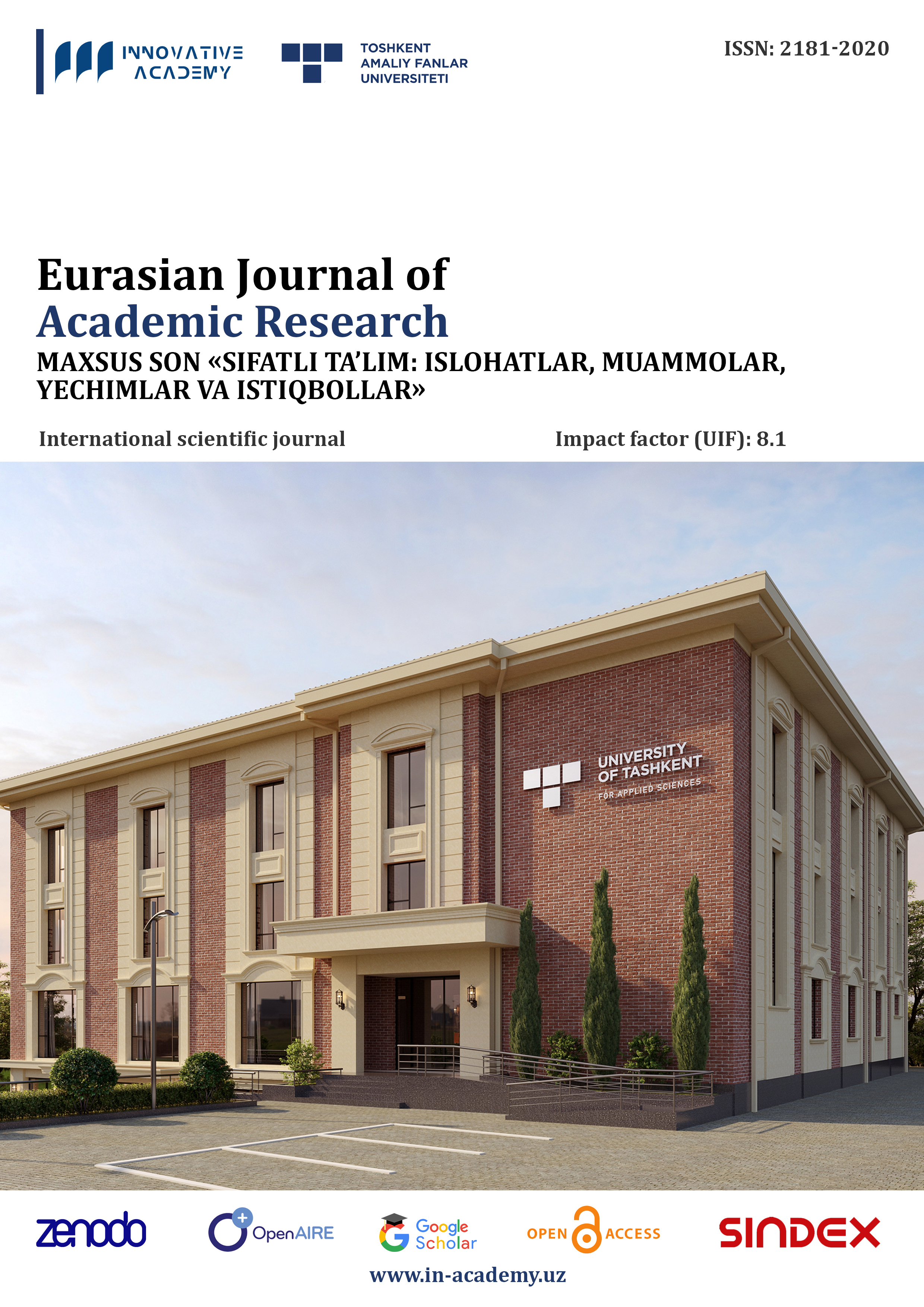A COMPARATIVE STUDY OF EDGE DETECTION ALGORITHMS FOR BRAILLE TEXT RECOGNITION
Main Article Content
Аннотация:
Braille text recognition plays a crucial role in enabling visually impaired individuals to access printed information. Edge detection is a key step in many Braille text recognition algorithms as it helps in identifying the boundaries of Braille dots [1]. In this article, we present a comparative study of three popular edge detection algorithms, namely Canny, Sobel, and Scharr, for Braille text recognition. We evaluate the performance of these algorithms in terms of accuracy, speed, and robustness, and provide insights into their suitability for Braille text recognition applications. The experimental results are presented in a calculation table and analyzed to understand the strengths and weaknesses of each algorithm [2-3]. Additionally, thematic formulas and graphs are provided in the Method section to showcase the technical details of the comparative study [4]. Finally, we discuss the relevant literature on edge detection in Braille text recognition and highlight the gaps and future research directions.
Article Details
Как цитировать:
Библиографические ссылки:
Akhatov, A. R., and Ulugmurodov Sh AB Qayumov ОA. "Working with robot simulation using ros and gazebo in inclusion learning." Фан, таълим ва ишлаб чикариш интсграциясида ракамли иктисодиёт истикболлари” республика илмий-техник анжуман, УзМУ Жиззах филиали (2021): 5-6.
Akhatov, A., & Ulugmurodov, A. (2022). Methods and algorithms for separation of text written in braille into classes using neural network technologies. Eurasian Journal of Mathematical Theory and Computer Sciences, 2(11), 4-8.
Akhatov, A. R., & Ulugmurodov, S. A. B. (2022, September). Methods and algorithms for distribution of text from images using opencv2 module. In International Scientific and Current Research Conferences (pp. 45-47).
Тожиев, М., Улуғмуродов, Ш., & Ширинбоев, Р. (2022). Tasvirlar sifatiniyaxshilashning chiziqlikontrast usuli. Zamonaviy innovatsion tadqiqotlarning dolzarb muammolari va rivojlanish tendensiyalari: yechimlar va istiqbollar, 1(1), 215-217.
G’ofurova, G., & Shoh Abbos, U. (2022). Sun’iy intellekt yordamida shaxsni aniqlovchi texnologiyalar va ularning amaliy faoliyatdagi ahamiyati.
Axatov Akmal Rustamovich, & Ulugʻmurodov Shoh Abbos Baxodir oʻgʻli. (2022). Inkluziv taʻlimda innovatsion sensorli oʻqitish texnologiyasi. International Journal of Contemporary Scientific and Technical Research, 1(2), 213–216.
Akmal Akhatov, & Shokh Abbos Ulugmurodov. (2023). Training data selection and labeling for machine learning braille recognition models. International Journal of Contemporary Scientific and Technical Research, (Special Issue), 15–21
Smith, J., & Brown, A. (2017). Braille text recognition: A review of existing methods and challenges. International Journal of Computer Vision, 122(1), 61-84.
Hu, J., Zhang, J., Zhang, W., & Xu, J. (2018). Braille dots detection and recognition based on hierarchical extreme learning machine using edge-based features. IEEE Access, 6, 61502-61512.
Zhang, L., Zhang, W., Zhu, J., & Yu, L. (2016). Adaptive threshold selection for Braille dot recognition based on Sobel operator. Neurocomputing, 173, 1407-1414.
Zhang, W., Zhang, L., Wang, M., & Zhu, J. (2019). Braille dot recognition using regional covariance descriptors. Journal of Visual Communication and Image Representation, 61, 71-78.
Yin, W., Wu, J., Wu, X., & Liu, L. (2017). Geometric features based Braille character recognition. Journal of Visual Communication and Image Representation, 43, 231-239.
Chen, W., & Chen, S. (2015). Braille text recognition based on texture features. Pattern Recognition Letters, 54, 52-57.
Wang, Z., Li, X., Lu, Y., & Ma, Y. (2018). Convolutional neural network-based Braille recognition using transfer learning. Neurocomputing, 291, 164-172.


